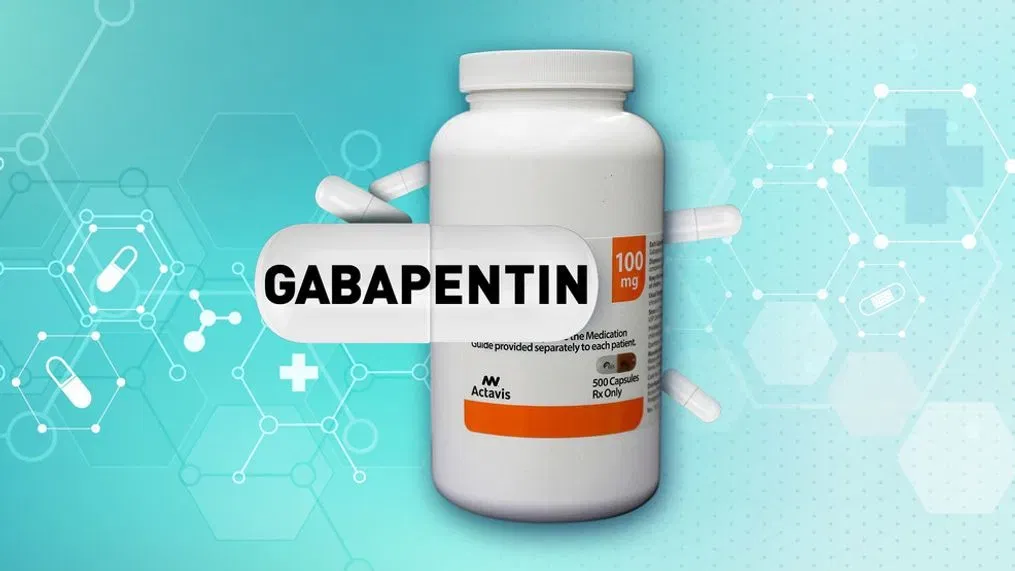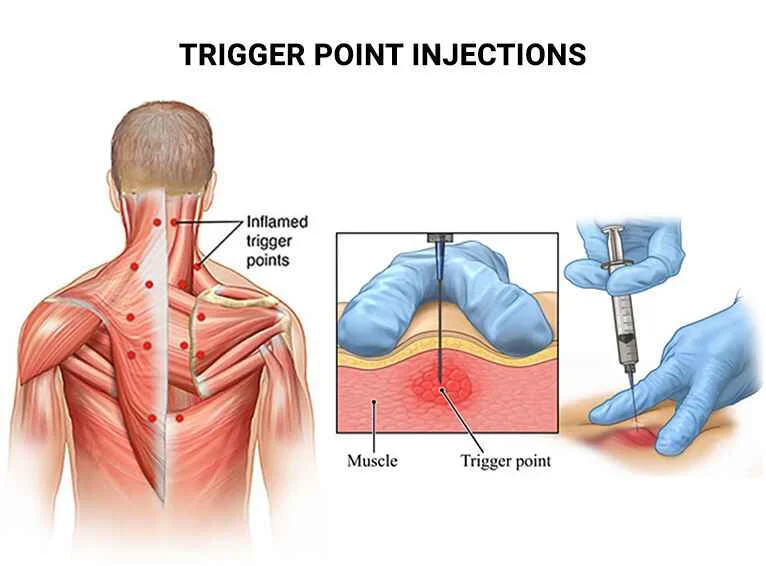Does Gabapentin Help Nerve Pain?
What is the drug gabapentin?
Gabapentin is a gamma-aminobutyric acid (GABA) analog that is available through a prescription. Excited nerve cells in the brain are called neurons, and they are responsible for transmitting pain impulses and causing seizures.
Gabapentin imitates GABA’s effects on stimulated neurons to calm them. Gabapentin cannot be purchased without a prescription. Oral capsules, oral tablets with rapid release, oral tablets with extended release, and oral solutions are the four forms that are currently available.
Introduction
As an anticonvulsant, gabapentin treats seizures and neuropathy. By reducing excessive brain activity and soothing overactive nerves, it relieves pain. Gabapentin might be a good medicine for nerve pain. But it might take some time to see if it works for you. It may take several weeks for the medication to start working at its best. Some people might need more time.
Prescription antiepileptic drugs like Neurontin (gabapentin) are often used to treat neuropathic pain, or pain resulting from damage to the nerves, as well as other medical disorders. Depending on your dosage, you could see pain relief from gabapentin for nerve pain within one to two weeks of starting to take it. It can take longer for some people to experience the advantages, though.
Gabapentin has been approved for the treatment of moderate-to-severe agitated legs, prevention, and control of partial seizures, and relief from nerve pain after shingles. There are branded and generic versions of gabapentin available. Gabapentin can help lessen nerve pain in some patients with peripheral diabetes (diabetes) and postoperative neuralgia (nerve pain after shingles)
For the treatment of nerve pain, prescription drugs like aspirin, Naproxen, and Advil (ibuprofen) can be used in place of gabapentin right away. Before making any drug selections speak with the doctor who treats you.
Why do I need a prescription for gabapentin?
- Certain recurrent pain conditions are treated with gabapentin.
- It works particularly well for nerve pain, including piercing, shooting, or scorching pain.
- As an anticonvulsant, gabapentin is a member of a class of medications that is also used to treat epilepsy.
Which side effects of gabapentin are most common?
The following are typical gabapentin adverse effects:
- Headache
- Nausea and vomiting.
- Fever
- Difficulty speaking
- Vomiting
- Heartburn
- Diarrhea
- Dry mouth
- Memory loss.
- Weight gain.
- Recurring infections.
- Feeling tired.
- Cough, discomfort in the throat, nose running, sneezing, or flu-like symptoms
- Ear pain
- Dizziness.
- Movement issues include tremors, jerky motions, instability, and poor coordination.
- Double vision and odd eye motions are examples of eye issues.
What harmful side effects does gabapentin have?
Contact your healthcare physician as soon as possible if you experience any of these symptoms:
- A skin rash, hives, itching, swelling, blistering, or peeling skin, with or without a fever, are indications of an allergic reaction. If you encounter any of these signs, get in touch with your physician. Additionally, if you have difficulty swallowing, wheezing, or if your mouth, lips, throat, eyes, or tongue widen, you should contact your doctor.
- Abnormalities of the liver include light-colored feces, black urine, yellowing of the skin or whites of the eyes, vomiting, and unusual bleeding or bruises.
- Trouble urinating, changes in the volume of urine passed, blood in the urine, weight gain, and swelling in the legs and feet due to fluid retention are all indicators of kidney problems.
- Changes in mood or behavior: Contact your doctor if you experience any of the following: difficulty sleeping, panic attacks, feelings of aggression or anger, impulsive behavior, extreme increase in depressive characteristics such as restlessness, anxiety, change in mood, thoughtful behavior, or self-injurious
- Additional irregularities include sudden, intense tiredness or weakness, bluish lips, finger or nail discoloration, and muscle soreness.
How would gabapentin function?
One of the main neurotransmitters in the central nervous system is gamma-aminobutyric acid (GABA). It’s an amino acid that helps to calm down brain and nerve activity.
The immediate-release drug gabapentin, commonly referred to as Neurontin, simulates GABA. Experts speculate about that this is how it reduces pain due to the increased GABA levels. The extended-release (large) gabapentin formulations sold under other brand names are Gralise and Horizant.
Which kind of nerve pain is acceptable for treatment with gabapentin?
Treatment for nerve pain resulting from nerve injury (neuralgia) with gabapentin is approved. Gabapentin is useful in treating:
- Nerve discomfort brought on by the herpes zoster virus, commonly called shingles. Post-herpetic neuralgia (PHN) is the term for this pain, which can range from severe to chronic.
- Diabetic neuropathy, which occurs when diabetic damage to the nerves in the foot results in a persistent burning sensation, can cause nerve discomfort.
How Does It Treat Nerve Pain?
Nerve pain arises from disorders or injuries affecting the somatosensory nervous system. Gamma-aminobutyric acid (GABA), an inhibitory neurotransmitter found in the brain, and gabapentin share structural similarities.
Although gabapentin lowers brain neuronal activity and neuronal transmission overall, it helps relieve nerve pain. The gabapentin dosage reduces all of the body’s excitability caused by hyper neuropathic transmission. The precise process by which gabapentin reduces nerve pain is not entirely understood, though. Through controlling the release of neurotransmitters in the central nervous system, it seems to prevent increased sensitivity to pain.
It’s essential that you maintain patience and keep taking it as directed. In order to determine whether gabapentin is right for you, your doctor may prescribe it for four to six weeks at a time or ask you to take the most severe safe quantity for at least two weeks at a time.
How is the medication gabapentin taken?
- Consider the medication whole, and add a glass of drinking water.
- One can take gabapentin with or without food.
- Don’t take more than is recommended.
What is the recommended gabapentin dosage for nerve pain?
When used to treat adult nerve pain, the usual daily dosage of gabapentin (Neurontin) is between 900 and 3,600 mg. This amount is divided into three doses, which must be taken for two weeks before the medication begins to take effect and reduce nerve pain.
Neurontin is supplied as 100, 300, or 400 mg capsules of soft gelatin (available in IR or XR versions for rapid release), with varying dosage recommendations based on the healthcare provider. Consult your healthcare professional before making any changes to your dosage. Overdosing on gabapentin can be harmful or result in significant negative effects.
What safety measures should I to take?
When taking gabapentin, keep the following in mind to stay safe and Notify your medical provider if;
- It is important to take a lower dose or gap out the dosing time if you have poor renal function to avoid undesired side effects.
- You have an allergy to this medication or any of its other ingredients.
- When gabapentin is taken alongside opioids (such as morphine or hydrocodone), it might result in respiratory depression, sedation, and even death. Inform your doctor if you use any medications, including opioids.
- Never stop taking gabapentin without first consulting your physician. Sudden stops can result in major issues. To guarantee a safe transition, your healthcare professional will gradually reduce your dosage.
- To avoid interactions, avoid taking gabapentin for at least two hours after taking a medicine that contains magnesium and aluminum hydroxide.
How Gabapentin Is Used to Manage Pain:
Gabapentin is used to alleviate nerve pain arising from neuropathy as well as partial seizures associated with epilepsy.
Postherpetic neuralgia: shingles-related nerve pain and diabetes-related nerve degeneration result in diabetic neuropathy, a searing agony in the foot. Gabapentin is recommended for the long-term management of pain.
It is not utilized to address acute pain. Although the precise mechanism of action is unknown, it may alter how your body perceives and responds to pain. It could take up to four weeks for gabapentin to start working at its best. Typically, a modest dose is used to begin, and it is progressively increased until it begins to function.
Not everyone responds well to gabapentin. Half of those who use gabapentin assert that they were able to cut their pain in half. Nevertheless, adverse effects are experienced by up to 60% of patients despite no pain alleviation.
What happens if I neglect to take my prescription?
- As soon as you recall, could you take it?
- If your next dose is almost here, though, omit the missed one and continue taking your prescription as usual.
- Never take two doses at once.
Does gabapentin have a strong therapeutic effect?
Since gabapentin is not primarily used to treat pain, unlike opioids and other medications, it is not a very effective analgesic. Gabapentin is not the strongest medication that is recommended. It is more commonly used to treat and reduce pain related to nerves and is a member of the anticonvulsant drug class.
It is important to note that gabapentin’s effectiveness varies greatly from person to person. As a result, a licensed healthcare professional should supervise its administration.
Risks and safety:
If a patient’s side effects are severe, persistent, or getting worse while taking gabapentin, they should discuss them with their doctor.
All Patients Need to Know:
Patients should be informed about the therapeutic dosage for neuropathic pain in order to improve compliance and boost the probability that they will keep to their treatment plan. This is how the discussion could proceed: “A 600 mg dose taken three times a day of gabapentin may help with nerve pain; however, patients typically start with a low dose to ensure they can tolerate it, and the dose is then gradually increased to give the body time to adjust.
If the dose increases along the adjustment process causing severe adverse effects, like vertigo or sleepiness, a common solution is to return to the initial dose and grow more gradually over a longer period of time. Patients should be encouraged to follow up with their prescriber for continued a tit.
Consult a Doctor:
Any medication that affects the central nervous system, including gabapentin, should only be taken as prescribed by a healthcare professional. For best results, compliance with the recommended length is essential. If used less frequently than prescribed, deviating from the regimen may result in withdrawal symptoms.
Prolonged use may also cause diseases like abrupt neuronal hyperactivity and poor muscular coordination. Nerve pain can occasionally last up to three months and can be both ongoing and recurring. Many people take gabapentin every day for the long term in order to manage their nerve pain. If, after beginning treatment, you are still in pain after a few weeks, consult your doctor.
Summary
Neuropathic pain, or pain from the nerves, is treated with gabapentin. An injury to the nerves or any part of the nervous system may outcome in nerve pain. A burning, piercing, or tingling sensation (also known as “pins and needles”) may be felt in the affected area. An anticonvulsant drug called gabapentin is used to treat epileptic seizures. It can also be used to treat restless legs syndrome (RLS) and nerve discomfort.
If you’re suffering from nerve discomfort, gabapentin can be a good option for you. It might require some time to determine if it is effective for you. It may take a few weeks for the drug to start working at its best. It can require considerably more time for certain people.
Gabapentin is prescribed by doctors to treat RLS, lessen nerve discomfort, and control seizures. There exist multiple varieties of gabapentin, each of which can address distinct medical conditions. It is generally advised to take gabapentin for a minimum of four to six weeks, or at least two weeks at the greatest dose that is tolerated.
Your doctor might advise you to keep taking it every day if your nerve pain is severe enough to require long-term relief. Although gabapentin is usually well tolerated, there are a few things you should know before taking this drug. It requires to be taking precisely as set by your doctor. To ensure the safe use of gabapentin, it is important to let your healthcare provider know about any allergies, conditions, and medications you are currently taking.
The appropriate dosage varies based on an individual’s condition and many other variables. When it comes to drug interactions and other safety issues, a doctor is the best person to consult. Even though gabapentin can have many negative consequences, many users report no significant side effects from using this medication.
FAQs
When experiencing withdrawal symptoms, such as anxiety, insomnia, nausea, discomfort, sweating, and occasionally agitation and disorientation, do not discontinue taking gabapentin without first speaking with your doctor. Speak with your healthcare expert so they can manage a controlled reduction.
Pain that lasts longer than three months is often connected with common illnesses such as intense diabetic neuropathic pain and post-herpetic neuralgia.3. Among other pharmaceutical treatments for neuropathic pain is gabapentin. Gabapentin is taken daily by many people for an extended time.
A drug that is used to relieve nerve pain is gabapentin. Often, standard medicines are ineffective at relieving this kind of pain. When combined with other analgesics, it can enhance your alleviation of pain.
It’s uncertain how precisely gabapentin reduces pain, though. It might alter how the body perceives and reacts to pain. Gabapentin should not be taken for acute pain; rather, it should be used to treat chronic, long-term discomfort. Depression can result from chronic pain, which can also affect sleep and productivity.
Within a week or two of starting gabapentin, you should start to feel less pain, however, for some people this may take longer. Nonetheless, some feel an immediate advantage. The next time you see the doctor or nurse, your treatment plan will be revisited.
Gabapentin is beneficial because it can reduce neuropathic pain, which is defined as chronic, long-lasting pain in the nerves that causes shooting, tingling, burning, pins and needles, and other “strange” sensations. As compared to several other pain relievers, gabapentin requires regular consumption rather than being taken as needed. It may take two to three weeks for gabapentin to start providing pain relief, and it may take up to six weeks to feel the full advantage, thus patience is required.
Neurontin, also known as gabapentin, is licensed to treat seizures and shingles-related nerve pain. It can be used for a variety of off-label purposes, such as alcohol use disorder. The usual time for gabapentin (Neurontin) to start working is one week. However, it could take up to a month to get the full effects of the medicine.
Either already have children or is attempting to become pregnant. if you have kidney disease or are on a restricted sodium or potassium diet (discuss with your doctor before taking gabapentin liquid as it contains these ingredients).
In the brain, gabapentin functions to stop seizures and reduce pain in specific nervous system disorders. It is not used to treat everyday pain from arthritis or small traumas. Anticonvulsants include gabapentin. You can only purchase this medication with a prescription from your physician.
Depending on the purpose of your gabapentin use, your doctor might advise starting it once daily. But since drowsiness is one of gabapentin’s most common side effects, it’s preferable to take it at night.
Certain persistent pain conditions are treated with gabapentin. It works particularly well for nerve pain, including piercing, shooting, or scorching pain. Medications classified as anticonvulsants, such as gabapentin, are also used to treat epilepsy.
Typically, gabapentin should be used for four to six weeks, or at least two weeks at the greatest dose that can be tolerated. On the other hand, nerve discomfort might last for three months or more and constitute a chronic problem. Your doctor could advise you to keep taking gabapentin every day if it relieves your symptoms.
After starting gabapentin, you should see an improvement in your pain within one to two weeks, while some people may experience a longer period. Some, nevertheless, experience benefits right away. When you see the doctor or nurse again, your treatment plan will be reassessed.
Certain drugs are particularly good in easing nerve pain, such as anticonvulsants and antidepressants. Amitriptyline, duloxetine, and gabapentin are common ones that doctors give.
Although it’s recommended to take gabapentin consistently each day, you can take it with or without food. Throughout the day, try to distribute your dosages equally. Taking it first thing in the morning, early in the afternoon, and right before bed might be some examples.
Many people take gabapentin every day for the long term to treat their nerve discomfort. If, after beginning treatment, you are still in discomfort after a few weeks, consult your doctor.
If gabapentin is ineffectual for your nerve pain or you don’t want to use it, there are many other medications that can be used instead. To find out more about a suitable substitute
drugs, please consult your physician.
Put it away from bright light in a cool, dry place. provide this medication only to adults.
Although it can cause side effects like blurred vision and behavioral changes, it is generally safe. Doctors frequently recommend the anticonvulsant drug gabapentin to treat epilepsy-related seizures. While there is no known cure for epilepsy, it can help patients manage their condition.
When taken as instructed, gabapentin can be very helpful for those who take it as prescribed; however, misuse of this medication can be harmful and even dangerous.
References:
- Can gabapentin be used to treat neuropathy? (As of now). Drugs.com. The medication gabapentin is used to treat nerve pain (35574779). Reference inside text: (Does Gabapentin Assist in Treating Nerve Pain?, n.d.)
- C. (not available). Uses, Interactions, Doses, Side Effects, and More of Gabapentin. https://my.clevelandclinic.org/health/drugs/21561-gabapentin is the Cleveland Clinic’s website. In-text Reference: (n.d.)
- Abdullah, R. August 22, 2023. How Can Gabapentin Treat Pain in the Nerves? 24/7 online chat with a doctor. For nerve pain, visit https://yourdoctors.online/gabapentin/ Citation inside the text: (Abdullah, 2023)
- March 5, 2021; Fashp, J. F. P. D. F. The right gabapentin dosage for neuropathic pain. Pharmacy-related Times. Where to get appropriate gabapentin dosage for neuropathic pain: https://www.pharmacytimes.com/view/
- MedlinePlus Drug Information: gabapentin (n.d.). a694007.html on https://medlineplus.gov/druginfo/meds. In-text Citation: (MedlinePlus Drug Information, n.d.) gabapentin
- T. O. PharmD (2023, May 4). How much time does gabapentin take to relieve nerve pain? Verywell Medical. What is the recommended duration of dosage for gabapentin in cases of nerve pain? (7486957) Reference inside text: (PharmD, 2023)
- Jordan, C. November 16, 2022. Lyrica with Gabapentin for Pain Management. WebMD. Pain management: https://www.webmd.com/gabapentin-lyrica-pain-control Reference within the text: Jordan, 2022
- Leonard, J. (October 13, 2023). Things to know about gabapentin. /articles/323681 at medicalnewstoday.com Within-Text Reference: (Leonard, 2023)






